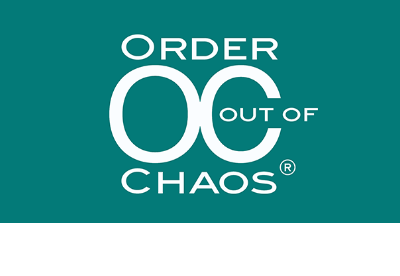
Struggling to Use Your Planner? Try This Habit Stacking Method
Posted by Laura Carter on
How to Use Habit Stacking to Help You Stay Consistent with Your Planner

Do you or your student struggle with using your planner consistently? You start the school year strong, filling in assignments and schedules, but within a few weeks, your planner sits untouched at the bottom of your backpack. Sound familiar? If so, you’re not alone! Many students face the same challenge—knowing that planners are helpful but struggling to make them a daily habit.
The good news? There’s a simple strategy that can help make planner use second nature: habit stacking. By linking your planner to something you already do every day, you can build consistency without even thinking about it. Here are some tips for how to use habit stacking to make your planner an essential part of your routine, so you can stay on top of assignments, deadlines, and activities without stress.
What is Habit Stacking?
Habit stacking works by attaching a new habit (like using your planner) to an existing habit that’s already part of your daily routine. Since you’re already doing the original habit automatically, adding a new one alongside it makes it easier to remember.
For example:
- If you already eat breakfast every morning, you can check your planner while you eat.
- If you always pack your backpack before school, you can take 30 seconds to look at your planner and update it.
- When you brush your teeth at night, you can review your planner to see what’s coming up tomorrow.
Instead of trying to remember to use your planner at random times, you’re piggybacking it onto a habit you won’t forget.
Why Habit Stacking Works for Students
Students have packed schedules, making it easy to forget to use a planner. Habit stacking works because:
- It eliminates the need for reminders – You don’t have to “remember” to check your planner; it becomes part of something you already do.
- It builds consistency – Small, repeated actions lead to long-term habits.
- It reduces decision fatigue – You don’t have to wonder when to check your planner because it’s always linked to another action.
- It fits into your day naturally – No extra effort is needed; it just becomes part of your routine.
How to Use Habit Stacking to Build a Planner Habit
1. Pick an Anchor Habit
Your first step is to choose a daily habit that is already firmly established. It should be something you do without fail every day, such as:
- Eating breakfast or lunch 🍎
- Brushing your teeth 🪥
- Packing your backpack 🎒
- Sitting down at your desk to do homework 📚
- Checking your phone in the morning 📱
2. Attach Your Planner Habit to It
Now, connect using your planner to that anchor habit. Here are some easy combinations:
- Before you eat breakfast, open your planner and glance at the day’s tasks.
- After you pack your bag for school, take 30 seconds to check what’s due.
- Before you start your homework, write down assignments and deadlines.
- After brushing your teeth at night, update your planner for the next day.
By tying your planner to something that already happens, it quickly becomes a normal part of your day.
3. Make It Easy and Accessible
To make your habit stick, remove any obstacles. Some tips:
- Keep your planner in a visible place, like your desk or next to your toothbrush.
- Store a pen with your planner so you don’t have to search for one.
- Use color-coding or stickers to make planning fun and visually appealing.
- If you prefer digital tools, set a daily planner reminder on your phone.
4. Start Small and Stay Consistent
Your goal isn’t to fill out an entire planner in one sitting—it’s just to build the habit. Start with one simple action, like:
- Writing down one assignment per day
- Checking your planner for 30 seconds before bed
- Highlighting just one important task for the next day
Once the habit sticks, you can expand on it, but starting small ensures you won’t quit.
5. Reward Yourself
Habits stick when there’s a positive association. Celebrate your progress by:
- Checking off completed tasks (it’s satisfying!)
- Using fun highlighters or washi tape
- Giving yourself a small treat after a week of consistent planner use 🍫
Common Challenges & How to Overcome Them
🔹 “I don’t have time.” Solution: 30 seconds is enough to build the habit—just check your planner quickly!
🔹 “I don’t know what to write in it.” Solution: Start by writing one thing per day, like an assignment, reminder, or test date.
🔹 “I forget to use my planner.” Solution: Keep it in a highly visible place where you’ll see it every day.
By incorporating habit stacking into your daily routine, you can transform planner use from an occasional task into an automatic habit. Instead of feeling overwhelmed by assignments, deadlines, and exams, you’ll stay organized, stress-free, and ahead of schedule.
👉 Ready to take control of your time? Start today by picking just one existing habit and stacking your planner routine onto it. Your future self will thank you!
What habit will you stack your planner use with? Let us know in the comments below!

